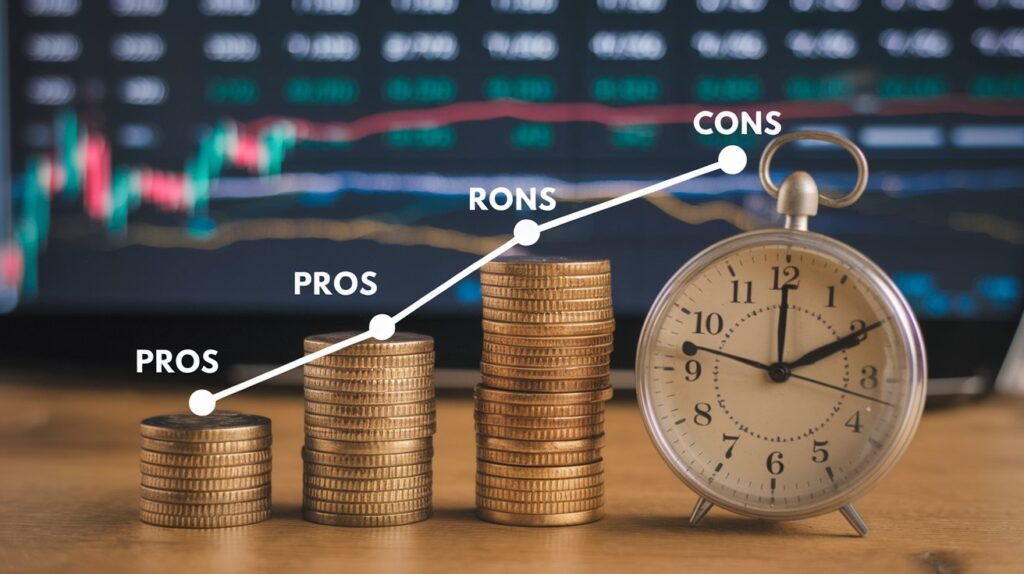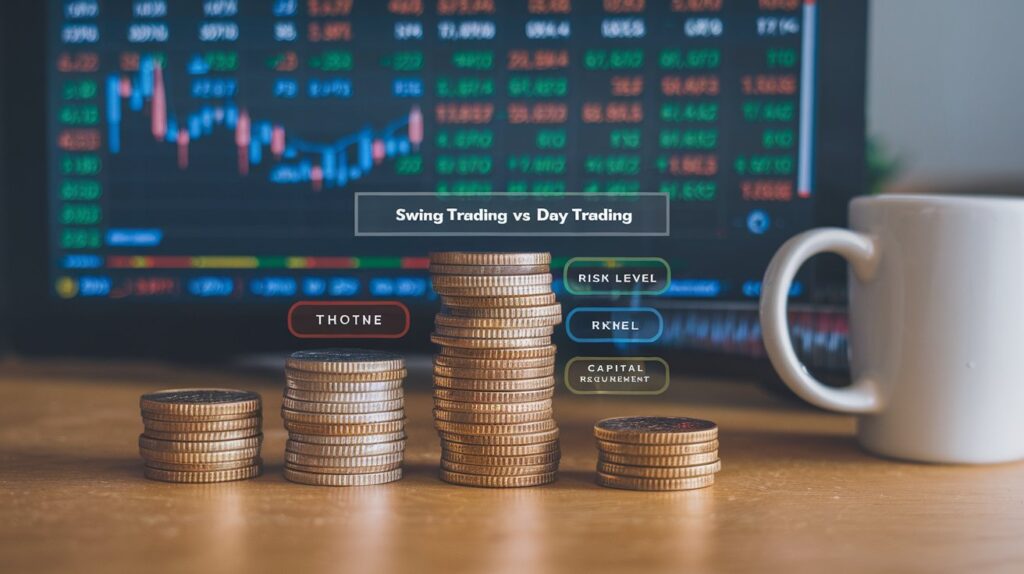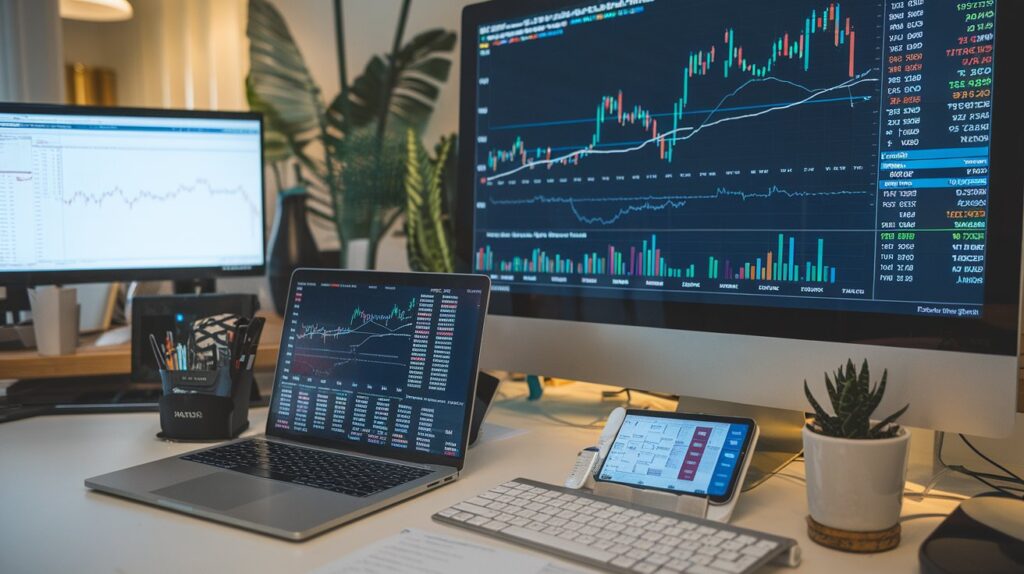Swing trading vs day trading which is best for you This is a question that every aspiring trader asks when stepping into the fast-paced world of financial markets. Both trading styles have their unique appeal and offer distinct advantages, but they also come with their own set of challenges. Swing trading focuses on holding positions for several days or weeks to capitalize on medium-term trends, making it a great option for traders with limited time. On the other hand, day trading involves buying and selling assets within the same trading day, offering the potential for quick profits but demanding intense focus and skill.
Choosing between these two approaches requires a deep understanding of your personal goals, risk tolerance, and time availability. For example, do you prefer the flexibility of analyzing markets in your spare time, or are you drawn to the adrenaline rush of high-frequency trading? This blog will break down the key differences, advantages, and risks of swing and day trading, helping you make an informed decision and setting the foundation for your trading success.
Table of Contents
Swing trading vs day trading which is best for you: Advantages and Disadvantages of Swing Trading
| Advantages | Disadvantages |
|---|---|
| – Flexibility: Perfect for part-time traders; requires less time commitment and monitoring. | – Overnight Risks: Positions are exposed to market gaps due to unexpected news or events. |
| – Captures Medium-Term Trends: Profits from price movements that span days or weeks. | – Requires Patience: Trades may take longer to reach profit targets. |
| – Lower Stress: Does not demand constant screen time or real-time decisions. | – Misses Intraday Opportunities: Short-term gains may be overlooked due to medium-term focus. |
| – Reduced Costs: Fewer trades mean lower transaction fees and less slippage. | – Risk of Reversals: Longer holding periods increase exposure to potential trend reversals. |
Key Differences Between Swing Trading and Day Trading
Advantages and Disadvantages of Day Trading
| Advantages | Disadvantages |
|---|---|
| – Potential for Daily Profits: Traders can capitalize on short-term price movements daily. | – High Stress Levels: Constant monitoring and decision-making can lead to burnout. |
| – No Overnight Risks: Positions are closed by the end of the trading day, avoiding overnight market gaps. | – Time-Intensive: Requires full-day commitment, making it unsuitable for part-time traders. |
| – Frequent Opportunities: High trading frequency offers more chances to profit. | – Significant Capital Requirement: Day trading often needs substantial investment to cover frequent trades and risks. |
| – Develops Discipline: Demands a structured approach and improves risk management skills. | – Emotional Challenges: Quick decisions can lead to impulsive actions and losses. |
Time Commitment
Swing Trading vs Day Trading Which is Best for You: Swing trading requires less daily time commitment since trades are held for multiple days. You can analyze markets during off-hours and make decisions accordingly. In contrast, day trading demands constant attention throughout the trading day, making it a full-time activity.
Risk and Reward
Day trading offers the potential for quick profits but comes with higher risks due to rapid price movements and frequent trading. Swing trading carries moderate risk, as traders hold positions longer but are less exposed to daily market volatility.
Skill Requirements
Day traders need advanced skills, including technical analysis, risk management, and quick decision-making. Swing traders rely on a mix of technical and fundamental analysis but can take a more relaxed approach.
Swing Trading vs Day Trading Which is Best for You: Pros and Cons of Swing Trading
Pros:
- Requires less daily time commitment.
- Suitable for part-time traders.
- Captures significant price movements over time.
Cons:
- Overnight risks due to unexpected news.
- May require patience during market consolidation.

Pros and Cons of Day Trading
Pros:
- Potential for daily profits.
- No overnight risks.
- Opportunities for frequent trades.
Cons:
- High stress due to constant monitoring.
- Requires significant capital for consistent gains.
- Risk of emotional trading leading to losses.

Swing trading vs day trading which is best for you: Which Trading Style is Best for You?
Swing Trading vs Day Trading Which is Best for You: Your choice between swing trading and day trading depends on your goals, risk tolerance, and lifestyle. Consider the following factors:
- Time Availability:
If you have limited time, swing trading is ideal. If you can dedicate full days to trading, day trading may suit you. - Risk Appetite:
Swing trading is better for those who prefer moderate risk, while day trading appeals to those who can handle high-pressure situations. - Skill Level:
Beginners might start with swing trading before moving to day trading as they gain experience.
Practical Tips for Success in Both Styles
For Swing Traders:
- Use daily or weekly charts to identify trends.
- Set clear entry and exit points.
- Be patient and avoid impulsive decisions.
For Day Traders:
- Develop a disciplined trading plan.
- Focus on a few high-liquid assets.
- Use stop-loss orders to manage risks effectively.

Conclusion
When deciding between swing trading and day trading, it’s crucial to evaluate your goals, resources, and trading style. Both approaches offer unique opportunities, but they cater to different types of traders.
Swing trading is ideal for individuals who:
- Have limited daily time to monitor the market.
- Prefer a more relaxed trading pace with moderate risk.
- Aim to capture larger price movements over days or weeks.
For example, a swing trader might hold a stock that has shown consistent bullish patterns for 5-10 days, aiming for a 5-10% gain.
Day trading, on the other hand, suits traders who:
- Can dedicate full-time hours to trading each day.
- Thrive in fast-paced, high-stress environments.
- Are comfortable managing higher risks for the potential of quick, frequent profits.
For instance, a day trader may trade high-volume stocks like Tesla or Amazon, aiming for small gains of 1-2% multiple times in a single day.
Key Data Insights:
- Studies indicate that 90% of new traders fail within the first year, often due to poor risk management or lack of preparation. This highlights the importance of choosing the right trading style based on your capabilities.
- According to market surveys, swing trading tends to yield annual returns of 10-30% for disciplined traders, while successful day traders often report monthly gains of 5-15%, though with significantly higher risks.
Ultimately, your choice depends on your time availability, capital, risk tolerance, and trading expertise. New traders might consider starting with swing trading to build foundational skills before venturing into day trading, which requires a higher level of commitment and proficiency.




